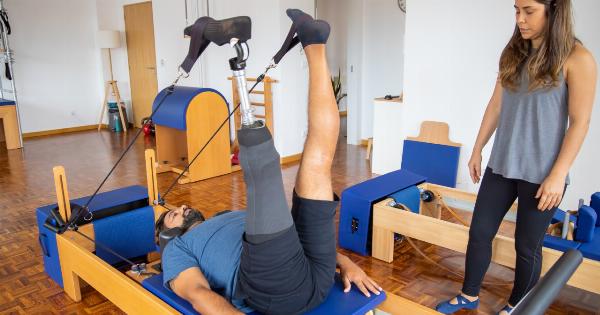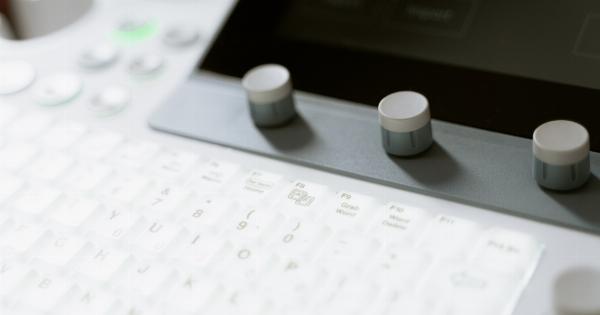Monitoring your pulse is an essential step in assessing your overall health and fitness level. Your pulse, also known as your heart rate, is a measure of how many times your heart beats per minute.
It is an important indicator of your cardiovascular health and can provide valuable insights into your physical condition. In this article, we will discuss simple ways to monitor your pulse and why it is crucial for your well-being.
Why monitor your pulse?
Your pulse rate is a window into the health of your heart and circulatory system. By monitoring your pulse regularly, you can obtain valuable information about your heart rate variability, exercise tolerance, and recovery rate.
Here are a few reasons why monitoring your pulse is crucial:.
1. Assessing your cardiovascular fitness
Monitoring your pulse during exercise can help evaluate your cardiovascular fitness level. Regular cardiovascular exercise strengthens your heart, leading to a decrease in your resting heart rate and an increase in your heart rate variability.
By monitoring your pulse before, during, and after exercise, you can assess your cardiovascular fitness and track changes over time.
2. Tracking your intensity during workouts
Knowing your pulse rate during exercise can help you determine the intensity of your workout. By staying within your target heart rate zone, you can maximize the benefits of your exercise routine.
Monitoring your pulse allows you to adjust your exercise intensity to reach specific fitness goals, whether it’s fat burning, endurance training, or aerobic conditioning.
3. Detecting early signs of overtraining or fatigue
Monitoring your pulse regularly can help identify early signs of overtraining or fatigue.
If your pulse rate is consistently elevated or fails to return to normal after a workout, it may indicate that you need to reduce your training volume or intensity to allow for proper recovery. Noticing these warning signs can help prevent injuries or burnout.
Ways to monitor your pulse
There are several simple and accessible ways to monitor your pulse. Here are some of the most common methods:.
1. Checking your pulse manually
One of the most straightforward ways to monitor your pulse is by checking it manually. To do this:.
a. Find your pulse: Place the tips of your index and middle fingers on the palm side of your opposite wrist, just below the base of your thumb. You can also use your neck, just to the side of your windpipe.
b. Count the beats: Once you’ve located your pulse, count the number of beats you feel within 60 seconds. Alternatively, you can count the beats for 15 seconds and multiply by four to calculate your heart rate per minute.
c. Record your findings: Keep a record of your pulse rate and any additional information, such as the time of day, activity level, and how you’re feeling. This can help you identify patterns and changes over time.
2. Use a fitness tracker or smartwatch
Another popular way to monitor your pulse is by using a fitness tracker or smartwatch. These devices often come equipped with built-in heart rate monitors that can continuously track your heart rate throughout the day, even during exercise.
Some advanced models can also provide additional information such as heart rate variability and recovery rate. Simply wear the device on your wrist, and the heart rate data will be recorded automatically.
3. Mobile apps
There are numerous mobile apps available that can track your pulse using the camera on your smartphone. These apps use advanced algorithms to detect subtle changes in skin color caused by blood flow.
You simply need to place your finger gently over your smartphone camera lens, and the app will measure your pulse within seconds. This method is convenient and portable, making it an excellent option for on-the-go pulse monitoring.
4. Chest strap heart rate monitors
If you’re looking for more accurate and precise heart rate measurements, a chest strap heart rate monitor could be the right choice for you.
These devices consist of a strap that you wear around your chest, which detects electrical signals from your heart. The strap connects wirelessly to a compatible fitness tracker or smartphone app, allowing you to monitor your heart rate in real-time. Chest strap heart rate monitors are popular among professional athletes and fitness enthusiasts.
5. Automated blood pressure monitors
In some cases, monitoring your pulse and blood pressure go hand in hand. Automated blood pressure monitors often include a built-in pulse rate monitor.
These devices are easy to use and provide accurate measurements of both your blood pressure and pulse rate simultaneously. They are particularly useful if you have hypertension or other cardiovascular conditions that require regular monitoring.
Conclusion
Monitoring your pulse is a simple yet effective way to gather important information about your heart health and physical condition.
Whether you choose to manually check your pulse, use a fitness tracker, or opt for a mobile app or chest strap heart rate monitor, finding a method that works for you is essential. By being aware of your heart rate, you can assess your cardiovascular fitness, track workout intensity, and detect early signs of overtraining or fatigue. Take charge of your health by incorporating pulse monitoring into your routine.





























